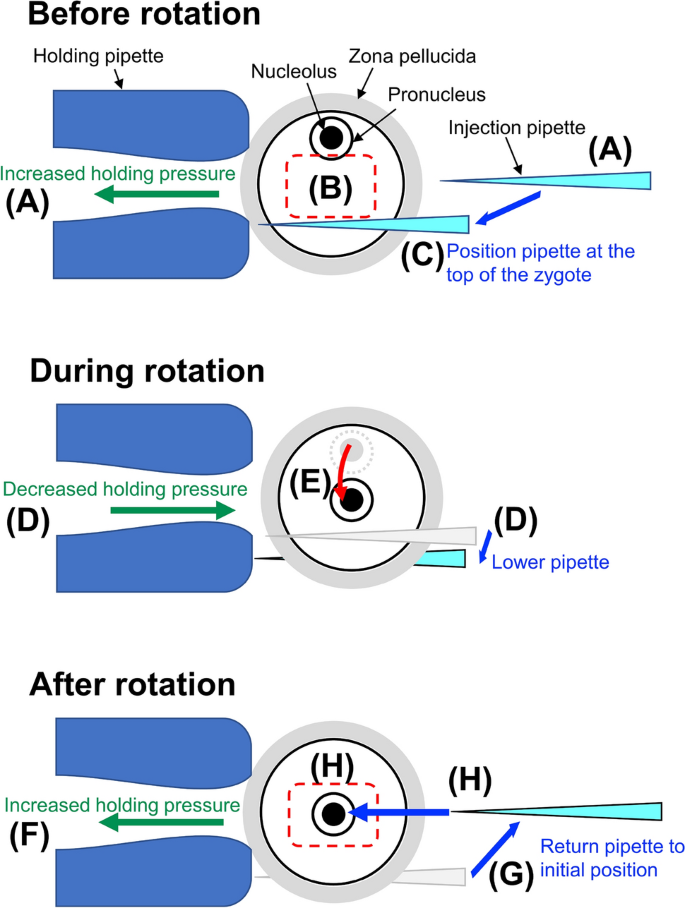The University of Minnesota Twin Cities academics have designed an artificial robot that, through machine learning, automates an intricate microinjection procedure of two different organisms that constitute the genetics course. The mass production enabled the scientists to use this automation component to manipulate organisms with a sufficient cell structure, including fruit flies and fish larvae. The device will decrease lab loads of time and money by making it easier to replace the manual methods with automation for carrying out large genetic assays, which became ineffective with manual operations.
Automating genetic manipulation
The research study, “A high-throughput genetic manipulation of multiphasic organisms by a camera-vision guided embryonic microinjection machine,” is on the issue cover of the April 2024 GENETICS, the online journal. Two University of Minneapolis mechanical engineering graduate students, Alegria Andrew and Joshi Amey, conducted research and answered questions. A commercialization team formed within the company focuses on marketing the technology for broad application through the Minnesota start-up Objective Biotechnology.
Microinjection is a type of manipulation that injects a particular material into cells or tissues using a very fine pipette. The delivered item can be a cell, genetic material, or anything else. Scientists have developed a robot that can recognize embryos with less than a hair-like thickness nowadays. Once the detection is over, the machine creates a route and can control the whole process. These are ways the robot assists the healthcare sector.
“These automated injections have replaced the manual injections, which are more reliable and efficient,” commented Suhasa Kodandaramaiah, a professor of mechanical engineering at the University of Minnesota and senior author of the study. Such a shift in the research field will allow the practice of new experiments at an individual laboratory level, which would not be possible without this type of technology.” Generally, it is the responsibility of a qualified technician to carry out a microinjection, which is not available in many labs. This revolutionary technology may broaden the capabilities of pre-lab procedures while compressing their duration and decreasing their associated expenses.
“This is extremely stimulating for genetics, which is the land of these new tools.” Also, it is a great opportunity to learn more and uncover our genetic code’s secrets. While DNA writing and reading technology have greatly improved in recent years, widening the range of organisms in which we can conduct large-scale genetic experiments will be made possible by combining our technology with DNA sequencing capabilities, according to the study co-author Daryl Gohl, assistant professor of the University of Minnesota Genomics Center’s Innovation Lab and Department of Genetics, Cell Biology, and Development.
Multifaceted applications
This technology could be used not merely as a tool in genetic experiments but also as an aid in avoiding the extinction of many species through cryopreservation, a methodology whose effectiveness has been demonstrated during deep freezing. “It is possible to use this robot to inject nanoparticles into cells and tissues, which can help preserve them and recover them in the rewarming process,” Kodandaramaiah explained.
In addition, other teammates brought forward a few ideas concerning other uses of advanced technology, which could contribute even more. The technological possibilities could get even better as implanting embryos could be done one at a time through in vitro fertilization to lower the chances of complications using this very same technology under the leadership of Andrew Alegria, a co-author on the paper and mechanical engineering graduate research assistant in the Biosensing and Biorobotics Lab of the University of Minnesota.
Apart from the co-founders, the team included university researchers from the College of Science and Engineering and the Innovation Lab of the Genomics Center of the University of Minnesota. The last tournament saw our team emerge as the champion of the University’s “Walleye Tank” biotechnology competition. Visitors to the event will receive business and marketing education and an opportunity to celebrate the achievements of existing and future companies in the medical and life science sectors.
This article originally appeared in Phys Org.





